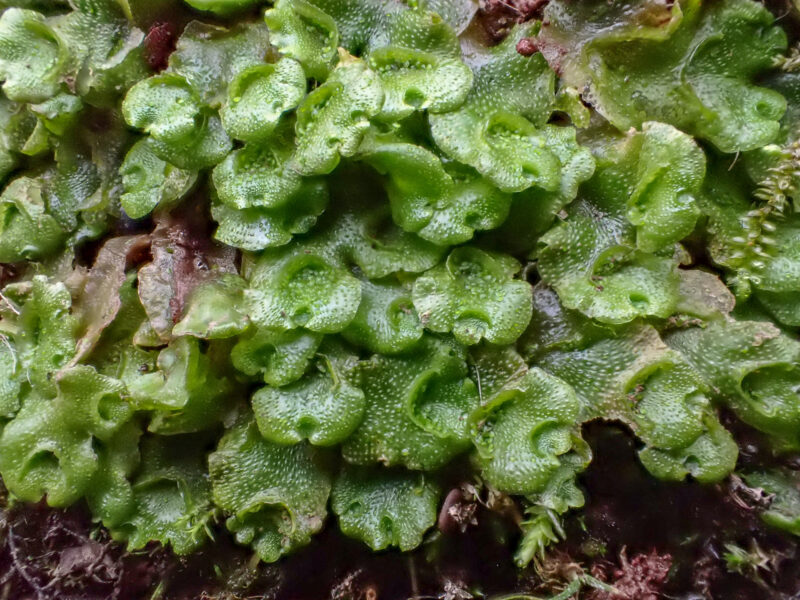Identification notes
When the crescent-shaped gemma receptacles are present on the upper surface of this very common thallose liverwort, it is quite unmistakable. No other British liverwort has these. In fact, it is often the subject of amusing photographs of cheerful-looking individual plants, such as in the Field Guide – turn the page upside down for the best view. (An opportunity missed there). It’s not all scholarship and difficult leaf sections in the world of Bryology, you know… Thalli have a faint network of lines on the upper surface, with evident air pores. It is often one of the first liverworts to be encountered by beginners, as it occurs in many man-made habitats such as paths and soil in greenhouses, churchyards and gardens, but is also common on stream banks in more natural surroundings.
Problems can arise, however, when the receptacles are absent. The plant can then look a lot like Conocephalum conicum, which can occur in similar places but which is usually more robust, strongly aromatic and with a bolder network of lines on the upper surface. Turn the plant upside down and on the Lunularia you will see the conspicuous ventral scales which are in one row on each side of the costa and transversely inserted so you can see them running across the plant underside, a bit like a ladder. In Conocephalum, they are inserted longitudinally, so not obvious in the same way.
Other thallose liverworts could conceivably be confused with Lunularia when no reproductive structures are present: Reboulia hemisphaerica has purplish margins and very faint reticulations and air pores. Marchantia quadrata looks similar to Reboulia but has quite distinct air pores and a hot, peppery taste. Marchantia polymorpha has a black midrib (except in subsp. montivagans) and the ventral scales are much less obvious. When reproductive structures are present in any of these liverworts, confusion is not likely, as these are very different from those of our smiling friend.
Read the Field Guide account










